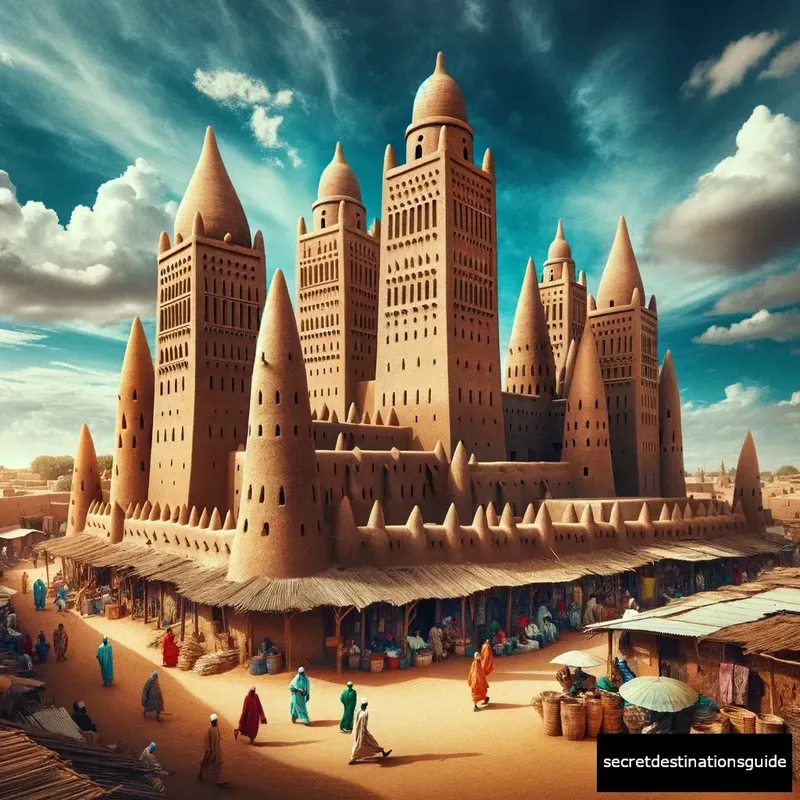Introduction
Welcome to Djenné, an ancient town located in the heart of Mali, West Africa. Known for its breathtaking Great Mosque, made entirely of mud-brick, Djenné is a UNESCO World Heritage Site that has retained its historical charm and cultural richness despite the sands of time. This guide will unveil the secret appeal of Djenné, a place where tradition intertwines with architecture, offering a unique travel experience far off the beaten path.

How to Get There
Reaching Djenné can be an adventure in itself. The most convenient route is to fly into Bamako, Mali’s capital, and then take a bus or hire a private vehicle to Djenné, which is about 400 kilometers away. The journey can take up to 9 hours, traversing through the scenic landscapes of Mali. For those seeking an authentic experience, consider traveling on local transportation, such as the colorful bush taxis known as “Sotramas,” although prepare for a longer journey.
Things to Do
Djenné is not your typical tourist destination, and that’s where its charm lies. Here are some must-do activities:
Explore the Great Mosque
The Great Mosque is the centerpiece of Djenné, known for being the largest mud-brick building in the world. Non-Muslim visitors can admire its impressive exterior and learn about its construction and significance from local guides.

Meander Through the Ancient Streets
Take a walk through Djenné’s narrow streets lined with traditional mud-brick houses. Visiting the Djenné-Jeno archeological site, located just outside the city, offers a glimpse into the pre-Islamic history of this ancient urban center.
Visit the Monday Market
The weekly market is a vibrant display of culture and commerce. It’s an excellent place to purchase local crafts, spices, and witness the lively interactions that define daily life in Djenné.
Local Cuisine
Malian cuisine is a delight to explore in Djenné, with dishes that tantalize the palate. Don’t leave without trying “Tigadegena” (peanut sauce) with rice, a staple Malian dish. Local eateries and street food vendors are the best places to savor authentic flavors, such as grilled fish and “Tô,” a sorghum porridge.
Accommodation OptionsFor those seeking to immerse fully in the Djenné experience, staying in a traditional mud-brick guesthouse offers a unique and comfortable option. There are also several small hotels and Airbnb listings within and around Djenné that provide a cozy stay, combining modern comforts with traditional Malian hospitality.
Best Time to Visit
The best time to visit Djenné is between November and February when the weather is cooler and the skies are clear. This period also avoids the rainy season, making it easier to navigate the town and surrounding areas.
Cultural Etiquette and Tips
As with any visit to a cultural gem like Djenné, it’s critical to approach with respect and awareness. Dress modestly, ask permission before taking photographs of people, and consider hiring local guides to enrich your understanding of the site. Learning a few phrases in French or Bambara can also go a long way in showing respect for local culture.
Conclusion
Djenné is a testament to the enduring spirit of Mali and its people. Its rich history, architectural marvels, and vibrant culture make it a must-visit for those looking to explore the less trodden paths of our world. Journey to Djenné, and uncover the hidden stories and treasures waiting in this unforgettable African oasis.
Ready to explore Djenné and uncover its hidden wonders? Share your thoughts and let the adventure begin!